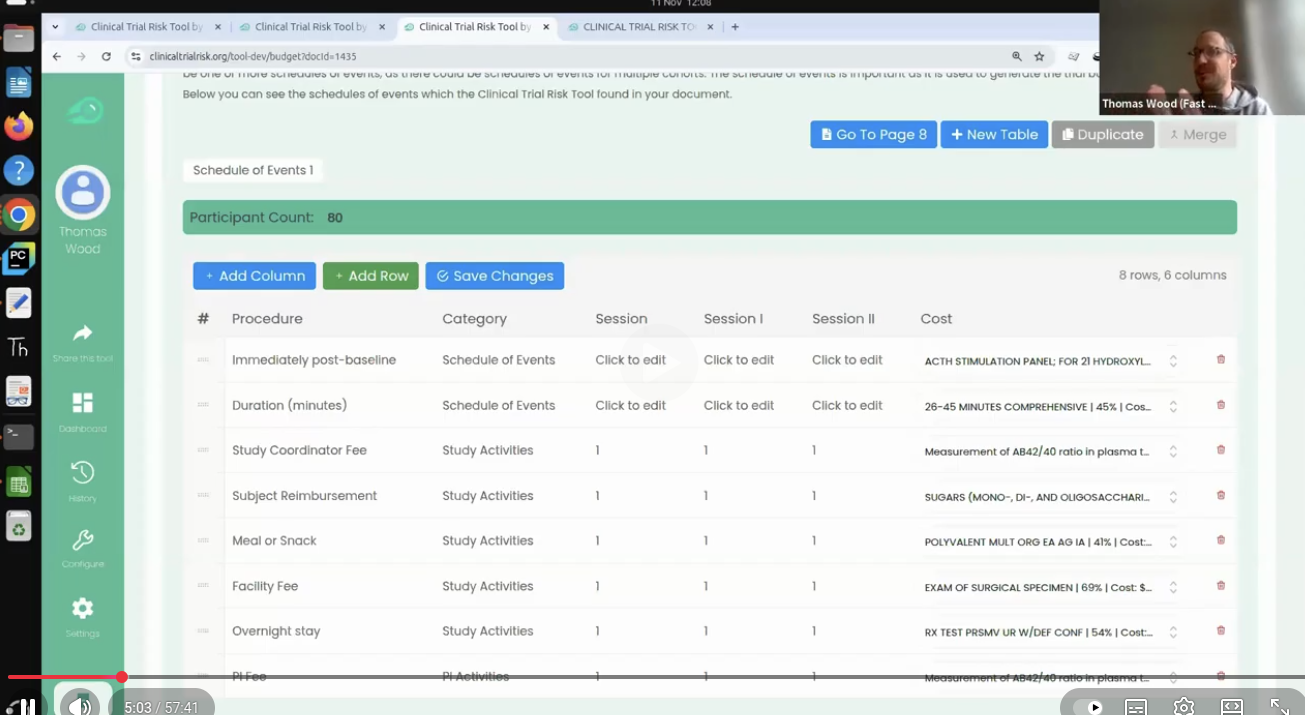
This post originally appeared on Fast Data Science’s blog on LinkedIn.
Clinical trial protocols are often long, detailed documents—sometimes 200 pages—filled with vital information about sample size, treatment methods, and statistical plans. These protocols ensure the effective conduct of trials, but their complexity increases the time needed for manual reviews and the risk of human error.
This is where Natural Language Processing (NLP) steps in. NLP enables machines to “read” unstructured data, such as clinical trial protocols, and extract key insights. By turning complex text into structured data, NLP makes it possible to perform detailed risk assessments quickly and accurately.
In the pharmaceutical industry, NLP is revolutionising processes, from pre-clinical research to protocol reviews and aftermarket monitoring. One such innovative application is the Clinical Trial Risk Tool, a powerful solution designed by Fast Data Science to simplify risk assessment and cost prediction.
When assessing clinical trial risks, the Clinical Trial Risk Tool uses a machine learning model to categorise protocols as High, Medium, or Low risk of ending uninformatively. But what does this mean?
Here’s how the tool works:
High Risk: Protocols with major design flaws, such as missing statistical analysis plans (SAPs) or insufficient sample sizes, increasing the likelihood of an inconclusive trial.
Medium Risk: Protocols that meet some key requirements but may have areas of concern, such as complex trial sites or unconventional endpoints.
Low Risk: Well-structured protocols that are adequately powered, have completed SAPs, and align with best practices.
The tool’s risk scoring formula (0–100) evaluates key features like:
Number of participants and study arms
Countries involved in the trial
Use of randomisation and simulations for sample size calculation
By automating this process, the tool enables more consistent, objective risk assessments, reducing human subjectivity.
The Clinical Trial Risk Tool initially supported trials for Tuberculosis (TB) and HIV, but it has since expanded to cover other critical disease areas, such as:
Oncology: Cancer trials often have complex multi-site designs and multiple endpoints, making risk assessment crucial.
COVID-19: Given the urgency of developing vaccines and treatments, this tool has been used to assess trials under accelerated timelines.
Neglected Tropical Diseases (NTDs): These trials often occur in low- and middle-income countries (LMICs), where limited resources make efficient protocol design essential.
For example, a pharmaceutical company conducting an oncology trial used the Clinical Trial Risk Tool to flag that its protocol lacked a clear effect estimate and had an overly ambitious sample size. This allowed the team to revise its design and prevent delays.
Whether you’re a pharmaceutical company, a funding organisation, or a regulatory body, the Clinical Trial Risk Tool offers several key benefits:
Improved Accuracy: The tool uses NLP to analyse clinical trial protocols, ensuring no crucial details are overlooked and providing data-driven insights to reduce the risk of human error.
Faster Protocol Reviews: The drag-and-drop PDF upload feature enables non-technical users to upload documents and receive a risk score in minutes, reducing review times by up to 50%.
Better Cost Prediction: The tool identifies cost-driving factors such as sample size, study visits, and trial site complexity, helping stakeholders optimise trial budgets.
Consistency: With its structured scoring system, the tool provides consistent evaluations across multiple trials, ensuring fairness and transparency.
The Clinical Trial Risk Tool is not just a time-saver—it’s a game-changer for clinical trial planning and optimisation. By harnessing the power of AI and NLP, you can improve protocol design, prevent costly delays, and ensure your trials deliver informative results.
Ready to see how it works?
🔗 Try the Clinical Trial Risk Tool today: Click here to get started
Want a guided walkthrough?
🎥 Watch this short demo: How to Use the Clinical Trial Risk Tool
Don’t let uninformative trials slow down your research—leverage AI-driven insights to make smarter, faster decisions.
#ClinicalTrials #NLP #AIInPharma #ClinicalResearch #RiskAssessment

Thomas Wood presents the Clinical Trial Risk Tool at the Clinical AI Interest Group at Alan Turing Institute The Clinical AI Interest group is a community of health professionals from a broad range of backgrounds with an interest in Clinical AI, organised by the Alan Turing Institute. In the group’s November 2025 meeting, the talk was given by Dr Jeff Hogg, Programme Director, MSc AI Implementation (Healthcare), University of Birmingham and Clinical Innovation Officer in AI, University Hospitals Birmingham NHSFT, titled AI Readiness for Health and Care Provider Organisations.

Guest post by Safeer Khan, Lecturer at Department of Pharmaceutical Sciences, Government College University, Lahore, Pakistan Multi-Arm & Multi-Stage (MAMS) Clinical Trials Design Tips The design of clinical trials is increasingly challenged by the Rising Costs, limited availability of eligible patient populations, and the growing demand for timely therapeutic evaluation. Traditional parallel-group designs, which typically compare a single intervention to a control, are often insufficient to meet these pressures in terms of speed, efficiency, and resource utilization.

You can use the t-test when you want to compare the means (averages) of continuous data between two groups, such as blood pressure or maximum concentration of a drug in urine (Cmax). If you have data with a dichotomous outcome, you can use the Chi-Squared test instead - please try our Chi-Squared sample size calculator. The calculator below will calculate the minimum sample size for you. Your expected effect size d is the standardised effect size according to Cohen’s definition.